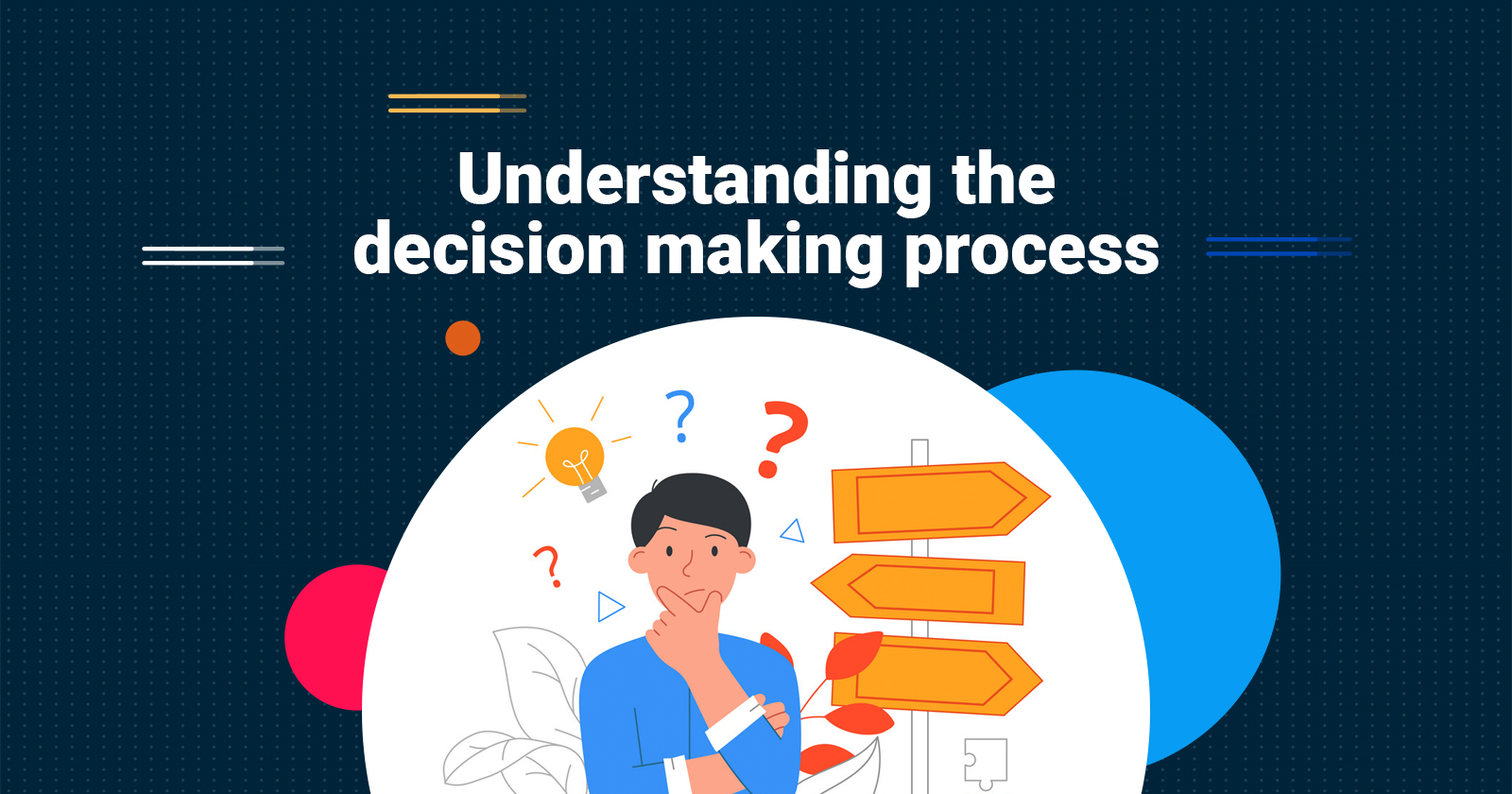
What are the gears that start turning in the head of your clients before they make a decision to purchase a policy?
This question has gotten us thinking – to further understand what actually goes into the decision making process when one is faced with a fork in the road.
As such, we did a little bit of research on this topic.
We hope by helping you understand the various stages of a decision making process, that you can then better influence it!
The 7 stages of a decision making process
In general (i.e. this might not be the case for everyone), most people knowingly or unknowingly go through 7 key stages before coming to a decision.
These stages could be sped through in a split-second (yes, that is how awesome our brains are). For example, deciding whether to raise your hands to swat at a fly or not.
These stages could also be very deliberate and occur over a period of time, like, in the process of purchasing an insurance policy or other major decisions one has to make…
- Stage 1: Identify the decision to be made
- Stage 2: Gather relevant information
- Stage 3: Identify the alternatives
- Stage 4: Weigh the facts
- Stage 5: Choose among alternatives
- Stage 6: Take action
- Stage 7: Review your decision & its consequences
Stage 1: Identify the decision to be made
This is the stage where your client realises a problem or a need.
In the context of insurance, this could be when the client (or based on your advice) decides to start looking at insurance policies they might need. For example, a client who is looking to set up a cafe and understands the need to for certain insurance coverage for this business.
At this stage, the client has consciously or subconsciously come up with a problem statement of which he needs to make a decision to solve – ‘do I need insurance for my cafe. What policies will best suit my needs?’
As such, this is an important stage for an intermediary to be present – advise your clients earnestly and this value you provide will manifest itself well in the next couple of stages!
Stage 2: Gather relevant information
This stage is where the client does a little bit of self assessment and education.
The client will likely look to do so on two levels.
One is on the internal level where they ask themselves a series of questions regarding their needs – things like ‘what would give me a peace of mind?’, ‘what are bare essentials and what are good-to-haves?’ or ‘what is my budget and what am I willing to pay?’
The other is external. This is where they find external sources to educate themselves. They do so via a myriad of channels – online, books, friends and/or speaking to expert advisors like yourself!
This stage is arguably the most important stage to be involved in as an insurance intermediary.
Here, you are able to influence the internal thought process (as mentioned above) and if you provide advice that your clients decide is good or trustworthy, they likely will include you in all other stages of the decision making process.
Stage 3: Identify the alternatives
At this stage, your client would have already made a decision that yes, they need insurance coverage.
Here, they decide what type of coverage and at what cost, amongst other things.
This is where the insurance intermediary can very tangibly showcase their value.
If you have been heavily involved in stages 1 and 2, you would already have an idea of what alternatives best suit this client.
Here, you can be that one-stop advisor who can provide your client with a holistic view of all their alternatives. Specifically, based on the client’s requirements, gather a good set of quotes for them to peruse over.
Stage 4: Weigh the facts
At this point, the client has probably felt like they have done all the homework required and has narrowed their longlist down to a shortlist.
They weigh the pros and cons of the different alternatives the insurance intermediary has presented to them.
Things like ‘Should I pay more to get this coverage?’, ‘How come coverage seems similar but one is cheaper than the other?’ or ‘Is there anything missing in the coverage that I have defined to be essential?’ etc.
Insurance can be the most complicated of things to decide on for the layman…
While it is important that the insurance intermediary walks the client through what they are getting, it does help (both the intermediary and the client) if information is presented in a structured format for easy comparison.
Leverage technology to not only impress the client, but also make life easier for all parties, at this stage of the decision making process!
Stage 5: Choose among alternatives
As the name of the stage suggests…
Decision time.
However, as an intermediary, you should not take this stage as a done deal.
The client might still have a couple more questions like ‘can i mix and match quote A and quote B’ etc.
These questions could be leaning towards a client just wanting to be sure that they have covered all grounds and would likely already have a decision that they are leaning towards and are perfectly prepared to make a decision / choice.
Stage 6: Take action
This is where the client commits.
They would have fully internalised the information, advice and evaluations made in stages 1 to 5 and are now ready.
At this stage, while the client is fully committed, it would actually go a long way if you offer to walk him through what this commitment entails.
While we understand this might be something many salespeople avoid, at the end of the day, and especially in insurance, recurring business and referrals is highly important and there’s no better way to do so than to be as earnest and clear as possible.
Also… this will inadvertently help you avoid any potential buyer’s remorse cases to deal with when stage 7 happens.
Stage 7: Review your decision & its consequences
While this stage is post-decision it is sometimes inevitable that we look back at our decisions.
This could be a conscious or subconscious effort on the part of the client.
It could also arise from the situation where the client shares his decision with friends, family or peers.
Regardless, the one thing that you do not want your client to feel is buyer’s remorse 👈🏻 check out this article on how to avoid this
While this might not be entirely within the intermediary’s control, trust that if you have done a stellar job that the likelihood of it happening is lesser!
—
We hope this article helps you understand a little about the key stages of a decision making process so you can plan for how you can influence your clients (positively of course) at each stage.
Are you an Insurance intermediary? Sign up for free now!
It is fuss-free. No credit card or payment required.
